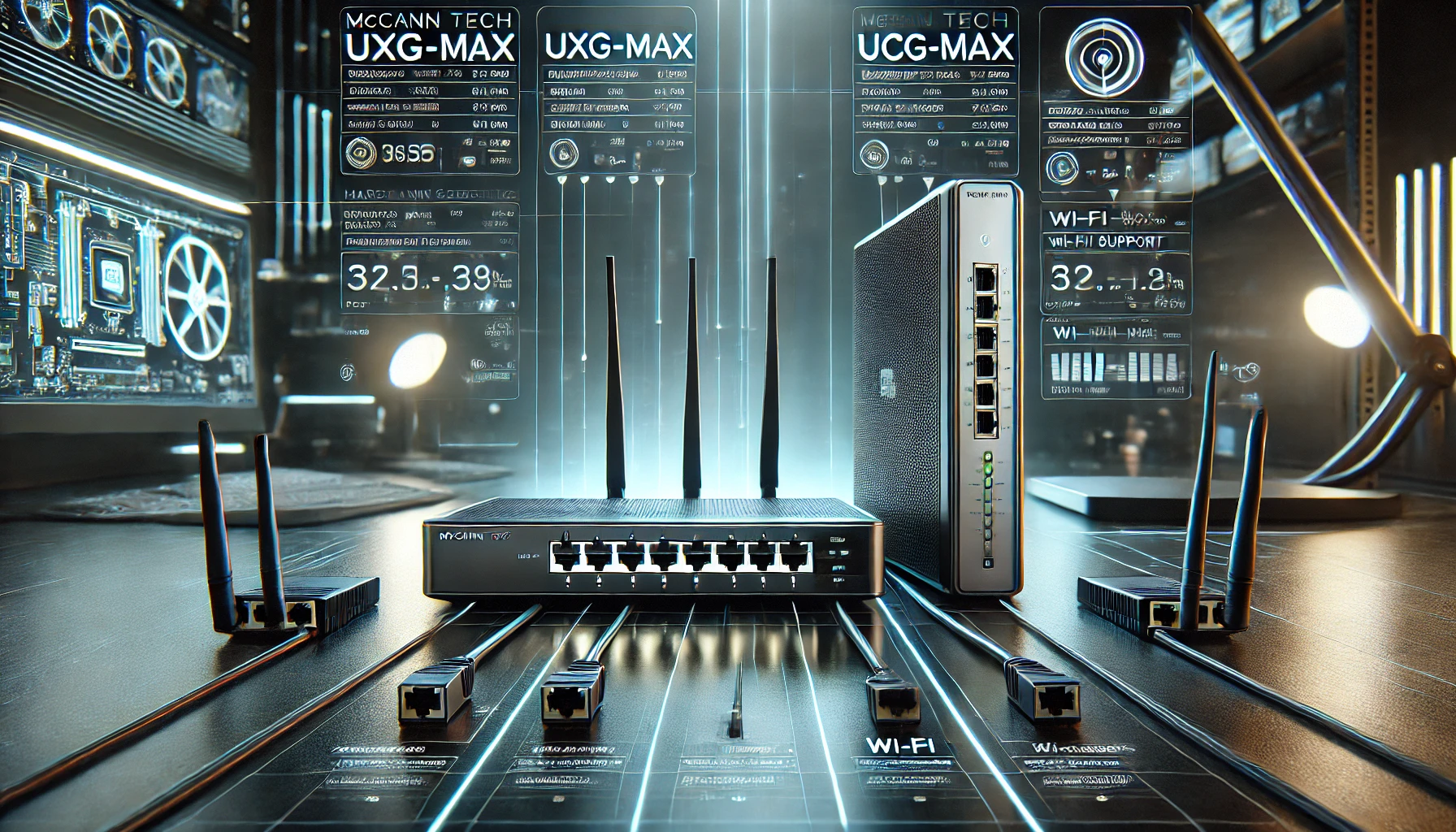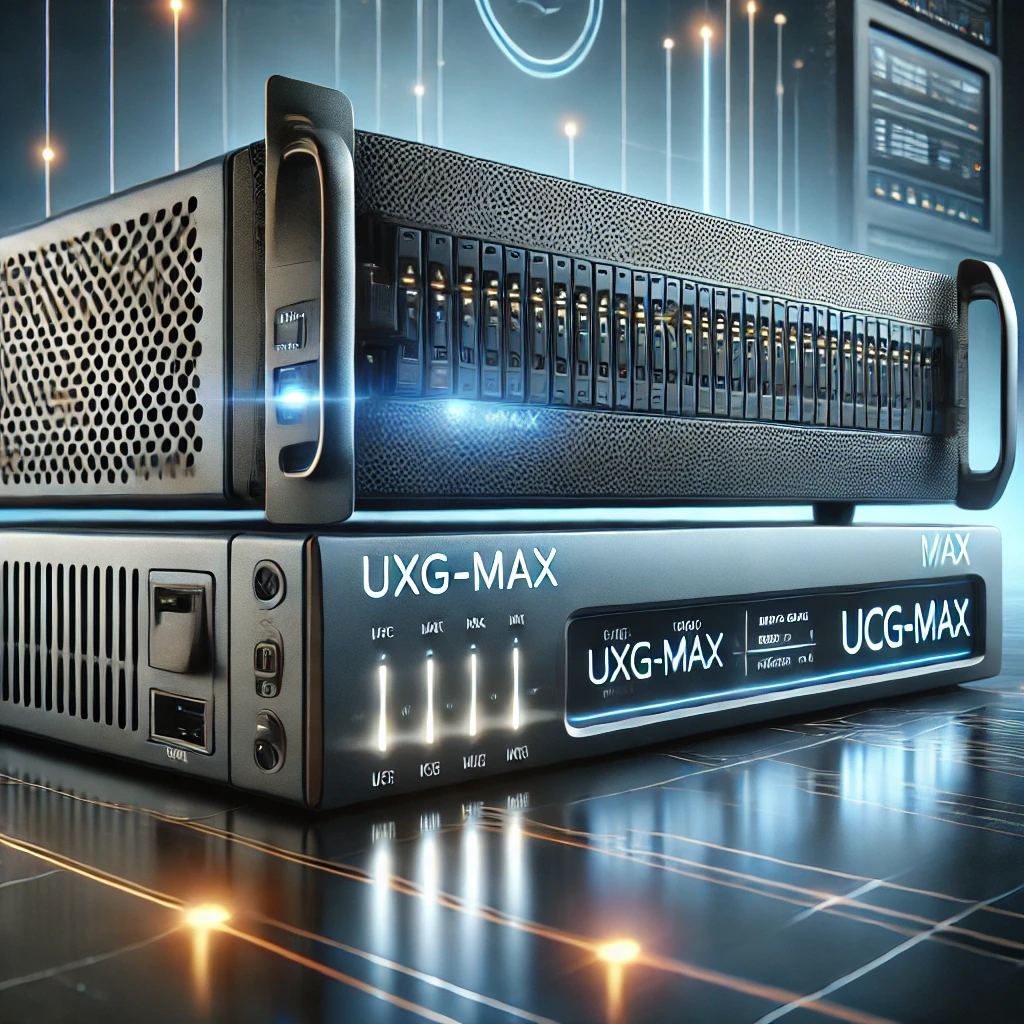- December 31, 2024
McCann Tech UXG-Max vs UCG-Max: A Comprehensive Comparison

McCann Tech UXG-Max vs UCG-Max: A Comprehensive Comparison
In today’s fast-paced digital world, the need for high-performance networking equipment is greater than ever. McCann Tech offers two standout products for advanced network management: the McCann Tech UXG-Max and the McCann Tech UCG-Max. Both devices cater to different user needs, so understanding their key features is essential to making the right choice. In this article, we’ll compare the McCann Tech UXG-Max vs UCG-Max, focusing on hardware specifications, functionality, performance, use cases, pricing, management and integration, and Wi-Fi support.
Hardware Specifications
When it comes to choosing between the McCann Tech UXG-Max vs UCG-Max, the hardware specifications play a crucial role.
- McCann Tech UXG-Max: Powered by a quad-core ARM processor with 2GB of DDR4 RAM, the UXG-Max is designed for those who need a robust gateway solution. It offers multiple 2.5 Gbps LAN ports and supports WAN configurations that can handle high-speed data flow, making it ideal for professional and business use.
- McCann Tech UCG-Max: On the other hand, the UCG-Max includes more RAM (4GB DDR4) for improved processing power, making it suitable for more demanding applications. Like the UXG-Max, the UCG-Max features high-speed 2.5 Gbps Ethernet ports, but it also includes integrated Wi-Fi 6 (802.11ax) support, providing better wireless coverage and faster speeds.
Functionality
The functionality of the McCann Tech UXG-Max vs UCG-Max is where these devices really begin to diverge.
- McCann Tech UXG-Max: As a standalone gateway, the UXG-Max is designed to provide superior routing, VPN, and firewall protection. However, it lacks built-in Wi-Fi and requires additional equipment, such as a separate access point or Wi-Fi router, for wireless connectivity. This makes it ideal for users who prefer to customize their network setup with separate components.
- McCann Tech UCG-Max: The UCG-Max, in contrast, is an all-in-one solution that combines routing, firewall, VPN, and Wi-Fi capabilities in one device. It simplifies the setup process, making it perfect for users who prefer a unified system that integrates all network management functions into a single unit.
Performance
In terms of performance, both the McCann Tech UXG-Max vs UCG-Max offer excellent speeds and reliability, but there are differences.
- McCann Tech UXG-Max: The UXG-Max supports up to 1.5 Gbps routing throughput, even with Intrusion Detection and Prevention Systems (IDS/IPS) enabled. This makes it a solid choice for users who need high-speed routing and security for their enterprise network without compromising performance.
- McCann Tech UCG-Max: While the exact routing throughput of the UCG-Max isn’t specified, it is expected to perform similarly, if not better, due to its higher RAM and integrated Wi-Fi 6 support. The UCG-Max can handle demanding network environments, offering faster Wi-Fi speeds alongside excellent wired network performance.
Use Cases
Understanding the use cases for each device helps you determine which is best suited for your needs.
- McCann Tech UXG-Max: Ideal for business professionals and enterprises that need a high-performance gateway with customizable configurations. If you already have a reliable Wi-Fi system or prefer to manage your network with separate devices, the UXG-Max is the right choice.
- McCann Tech UCG-Max: The UCG-Max is perfect for home users, small businesses, or even larger enterprises that need an all-in-one solution. It is particularly beneficial for environments where ease of use, wireless connectivity, and simplified management are crucial.
Pricing
When comparing pricing, cost is always a key factor in the decision-making process.
- McCann Tech UXG-Max: Priced at a competitive rate, the UXG-Max provides excellent value for users looking for a professional-grade gateway without the added cost of integrated Wi-Fi. It’s a cost-effective option for those who want to build a customized network setup.
- McCann Tech UCG-Max: The UCG-Max, being an all-in-one solution with Wi-Fi and greater memory capacity, comes at a slightly higher price point. However, for users seeking a hassle-free, integrated networking solution, this price is justified.
Management and Integration
Management is crucial for efficient network administration, and both devices offer different approaches.
- McCann Tech UXG-Max: Requires external management via a UniFi Network application, such as a Cloud Key or self-hosted solution. This allows more flexibility for users who prefer to set up their network on their terms.
- McCann Tech UCG-Max: The UCG-Max offers built-in UniFi Network controller integration, allowing users to manage their entire network through a single interface. This is especially beneficial for those who want ease of use and centralized management.
Wi-Fi Support
Wi-Fi support is another critical factor, especially in today’s wireless world.
- McCann Tech UXG-Max: As mentioned earlier, the UXG-Max does not include built-in Wi-Fi. It is best suited for users who either already have a Wi-Fi solution or need to manage wireless networks separately from the gateway.
- McCann Tech UCG-Max: The UCG-Max excels in Wi-Fi performance, thanks to its integrated Wi-Fi 6 access point. It supports faster speeds and better wireless coverage, making it an excellent choice for users who need reliable Wi-Fi without additional hardware.
Conclusion: McCann Tech UXG-Max vs UCG-Max
Choosing between the McCann Tech UXG-Max vs UCG-Max ultimately depends on your specific needs:
- If you’re looking for a high-performance gateway that you can integrate into a larger, more customized network, the McCann Tech UXG-Max is an excellent option.
- However, if you prefer an all-in-one solution with built-in Wi-Fi and a centralized management system, the McCann Tech UCG-Max is the better choice.
Both devices offer outstanding performance, but understanding your needs for customization, Wi-Fi coverage, and management will help you make the right decision.